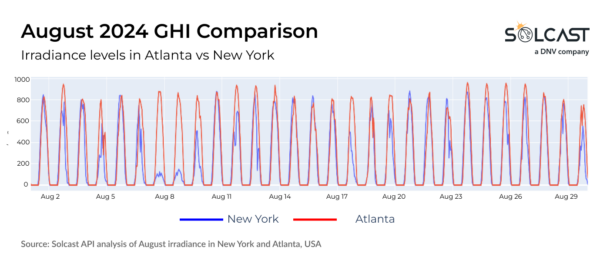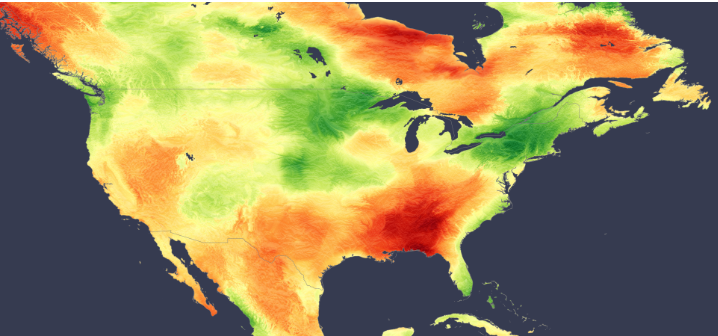August 2024 marked an extraordinary month for solar energy production in the Southeastern states. A dominant high-pressure ridge in most of the US, particularly over the Southern Plains and Southern states, resulted in record-breaking warmth and irradiance levels, according to analysis using the Solcast API. Meanwhile, regions like the Midwest and Northeast experienced cloudier conditions and lower irradiance due to the interaction between the jet stream flow and the high-pressure system.

A high-pressure ridge across the continent persisted throughout August, delivering clear skies and above-average irradiance in the southern US. States such as Tennessee, Mississippi, Georgia, and Alabama saw irradiance levels up to 130% of their climatological average, with Atlanta recording its highest average daily August irradiance since 2007.

These clear-sky conditions followed a pattern of record-breaking temperatures and drought, as many southern states experienced exceptionally warm and dry conditions that persisted throughout the month.

In contrast, the situation was vastly different in the Midwest, Northeast, and parts of lower Quebec, where they experienced cloudier conditions. The high-pressure ridge diverted the jet stream further north, allowing Pacific low-pressure systems and cold fronts to converge over these areas with the warm air resulting in cloud cover, heavy rain and an irradiance of 20% below average. The northeastern US, in particular, experienced frequent showers that significantly reduced solar generation potential.

The graph above shows the stark difference in irradiance between Atlanta and New York. Atlanta, benefiting from an almost month-long-streak of clear skies, consistently recorded higher and more stable irradiance throughout August. In contrast, New York’s irradiance level reveals significant day-to-day fluctuations with many days of low irradiance derived from cloud cover. Including the August catastrophic slow-moving system that brought flooding to the north east.
Solcast produces these figures by tracking clouds and aerosols at 1-2km resolution globally, using satellite data and proprietary AI/ML algorithms. This data is used to drive irradiance models, enabling Solcast to calculate irradiance at high resolution, with typical bias of less than 2%, and also cloud-tracking forecasts. This data is used by more than 300 companies managing over 150GW of solar assets globally.
The views and opinions expressed in this article are the author’s own, and do not necessarily reflect those held by pv magazine.
This content is protected by copyright and may not be reused. If you want to cooperate with us and would like to reuse some of our content, please contact: editors@pv-magazine.com.








By submitting this form you agree to pv magazine using your data for the purposes of publishing your comment.
Your personal data will only be disclosed or otherwise transmitted to third parties for the purposes of spam filtering or if this is necessary for technical maintenance of the website. Any other transfer to third parties will not take place unless this is justified on the basis of applicable data protection regulations or if pv magazine is legally obliged to do so.
You may revoke this consent at any time with effect for the future, in which case your personal data will be deleted immediately. Otherwise, your data will be deleted if pv magazine has processed your request or the purpose of data storage is fulfilled.
Further information on data privacy can be found in our Data Protection Policy.